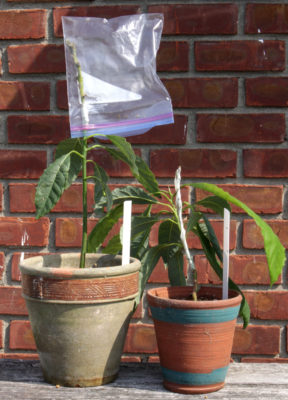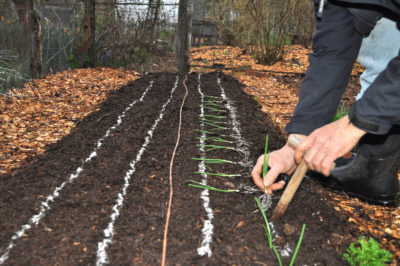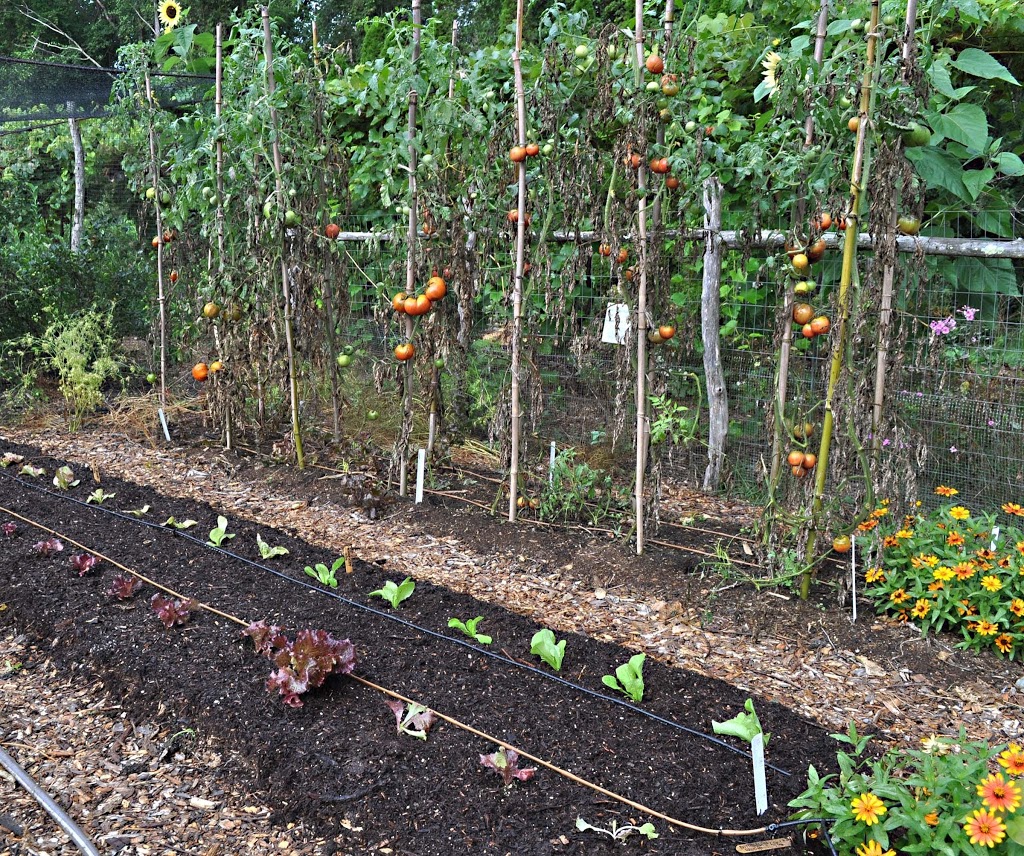RATIONALITY CHALLENGED
New York Avocadoes!?!?
I make no claim to be rational in my gardening — especially this time of year. This thought comes to mind as I look closely at two avocado plants sitting in a sunny window. “Nothing irrational about growing avocado plants in New York,” you might say. After all, the large seeds are fun and easy to sprout, and the resulting plant adds some tropical greenery indoors.
My two plants were run-of-the-mill avocado houseplants until I took knife to them.
Let’s backtrack . . . Among my regrets of not living 1,000 miles or so south of here is not being able to harvest my own citrus and avocados. (Also, no outdoor gardenia shrubs or southern magnolia trees here.) A few indoor citrus plants do call mi casa sus casa. But no avocados.
From seed, an avocado would take a long time before it bore its first fruit. And especially long under less-that-ideal northern conditions, including indoors in winter.
And worse, when the plant does finally flower, it might not bear fruit. Avocados generally need cross-pollination because the pollen isn’t ripe at the same time that the female stigma is receptive. Avocado pollinators need to be fairly specific, so that one plant’s pollen is in synch with another plant’s stigmas.
And even worse, after all that time and hoping for appropriate mates, fruits that do form might not taste good. They wouldn’t be selected clones, such as the delectable Haas or Mexicola, but seedlings. (Plant a seed from a good tasting apple and the resulting tree has only one in 10,000 chance of bearing a good-tasting fruit.)
Which is why I took a knife to my two avocado seedlings, to graft them to known, good-tasting varieties that are pollination compatible. A friend in Florida overnighted me scions — pencil-thick stems, with leaves stripped — cut from his Marcus Pinkham and Lula avocado trees. One of my seedlings got a whip graft of Marcus Pinkham; the other got a side-veneer graft of Lulu.
I coverWithed both grafts with plastic to maintain humidity, and every day peer at the scions hoping to see some swelling in preparation for growth.
Rational gardening? No. After all, even if all goes as planned, how many avocados could I expect to harvest from two small trees? Still, it’s fun.
Warm. Plant.
Outdoors, it’s the weather that toys with my rationality. A spate of warm days and great restraint is needed not to plant vegetables. I keep referring to my notes (and the chart I made in my book Weedless Gardening) that tell me when to plant what.
 With yesterday’s 75 degree temperatures, urges to plant were satisfied — for that day, at least — by my poking holes into the ground into which I dropped onion plants sown indoors on February 1st. Three-hundred of them in a 20 foot long by 36 inch wide bed. (This was later than the April 21st onion planting date specified in my book, but the weather was cold so I forgot to look at my book.)
With yesterday’s 75 degree temperatures, urges to plant were satisfied — for that day, at least — by my poking holes into the ground into which I dropped onion plants sown indoors on February 1st. Three-hundred of them in a 20 foot long by 36 inch wide bed. (This was later than the April 21st onion planting date specified in my book, but the weather was cold so I forgot to look at my book.)
Planting Break. Turn Compost.
When I get tired of planting, I can always turn to turning my compost piles.
Not that compost piles have to be turned. In contrast to other fermentations, such as bread-making and wine-making, compost always comes out right. Pile up any mix of organic (living or once-living) materials, and eventually you get compost.
I turn my compost piles so that materials on the outside of the pile get to be on the inside of the pile, second time around. This makes for a more homogeneous finished product.
I turn my compost piles to better monitor their progress, so adjustments can be made, as needed, and to get some idea when they’ll be ready for use. Occasionally, a pile will have a dry region; it gets watered. Occasionally, a mass of material needs to be broken up to better expose it to moisture and microorganisms.
I also turn my compost piles because it’s good exercise and it’s interesting. But, like I wrote, turning a compost pile is not a must.



Lee,
In early 1983 we moved to San Jose CA and went looking for a house. While checking out an older house – built in the 1930s – I saw a large tree in the back yard. I asked what it was (we were from NYC), the owner told us it was an avocado tree. She said it produced a lot of avocados; so many so that after the neighbors took all they could use, she had to take wheelbarrows full of avocados to the dump. Such are the joys of living in California.
I’m jealous.
You say “(Plant a seed from a good tasting apple and the resulting tree has only one in 10,000 chance of bearing a good-tasting fruit.)”
I have many wild apples growing in my woods and most are edible if a bit tart. Some have a mealy mouth feel but not many. They certainly make fine apple sauce, pies, dried fruit, and juice. But they’d never make it to a supermarket because they don’t look like Sleeping Beauty apples.
I wonder if the 1 in 10,000 is one of those statements that has a life of its own without much merit. With 2,500 or so known varieties in the US that would mean that 25,000,000 seeds were planted and selected from.
Sadly, I think that the 1 in 10,000 discourages many folks from trying to grow apples from seed.
I was, in fact, trying to discourage folks from growing apples from seed — if they ever wanted to be harvesting high quality fruit. Almost any fruit can be doctored up with enough sweetener and heat to be edible, but such fruits are far cries from fresh, high quality fruit. Don’t forget the halo effect: In this case, giving an apple you pick from your tree a higher rating that it would otherwise get. I have to stop myself from doing this all the time. With all that said, it is fun to grow any tree from seed. And if you eventually graft that apple seedling to a good tasting variety, all the better. (Those 2500 apple varieties — actually, closer to 5000 varieties — have been selected throughout the world over many centuries.)